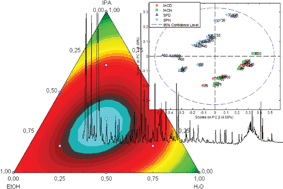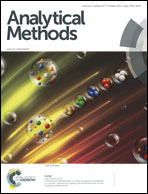HPLC-DAD method for metabolic fingerprinting of the phenotyping of sugarcane genotypes
Abstract
Metabolite profiling techniques play an important role in the phenotyping and diagnostic analysis of plants. The complexity of the plant metabolome makes the application of a single extraction and analytical method to all the metabolites challenging. High performance liquid chromatography coupled to a diode array detector (HPLC-DAD) has been the most popular analytical technique for analyzing natural products. Therefore, our group aimed to develop relevant methods using experimental design techniques using the number of metabolites detectable by HPLC-DAD as a response to compare sugarcane genotypes. Using this approach, the best extraction parameters were identified, including the number of extractions and the ratios of the solvents water/ethanol/isopropanol. Chromatographic performance was optimized using a Kinetex column, methanol as solvent B and a gradient time of 60 minutes. The method was applied to the phenotyping of two sugarcane genotypes with different susceptibilities to orange rust disease. Metabolic fingerprinting was subjected to principal component analysis (PCA), enabling the discrimination of the genotypes based on their flavonoid contents.


 Please wait while we load your content...
Please wait while we load your content...